After a restless early life, in 1953 artist Ian Fairweather (1891–1974) consolidated his home and art in a hut on Bribie Island, in Brisbane’s Moreton Bay. The following 20 years saw Fairweather achieve the summation of his life’s labour as a painter and the works from this period brought him enduring fame.
From his hut, Fairweather transformed his immediate surroundings and his memories into complex, layered paintings, remarkable in their light, colour and vision. They convey the settled, almost comfortable state he’d achieved on Bribie, as well as some of his lingering anxieties and their disquieting effects; Fairweather’s past recurred in his compositions, with images and experiences haunting them. Works that illustrate his leap into complete abstraction are around 1959–60. Despite the enduring appeal of his earlier works, these later compositions define Fairweather’s place in Australian art history.
Ian Fairweather ‘Pumicestone Passage’ 1957
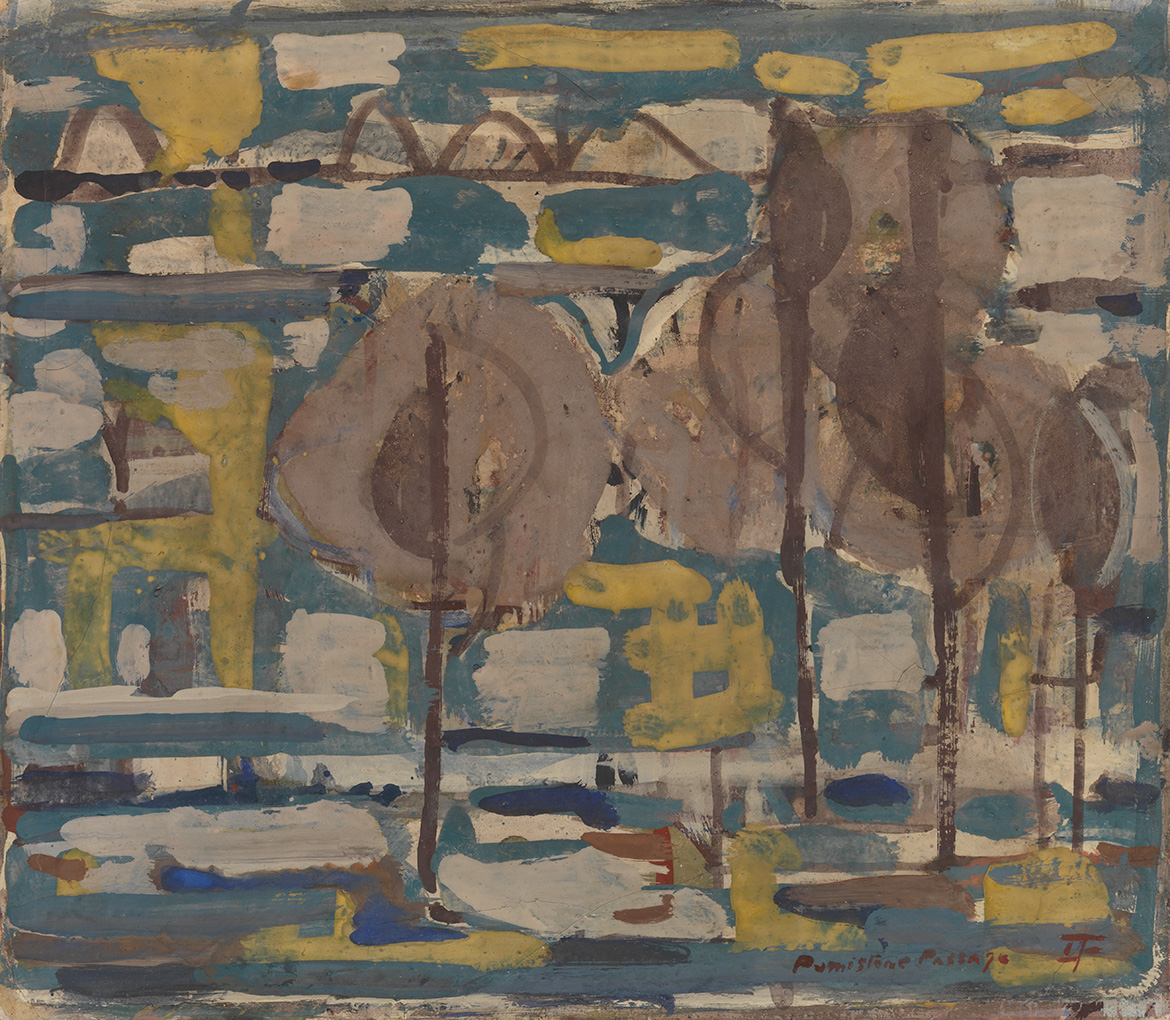
The landscape Pumicestone Passage 1957 is among the few paintings Fairweather made in Queensland that depicted a specific place. Even so, the Glasshouse Mountains — which can be seen in the distance from the site of the artist’s hut on Bribie Island — are shown with only a token of topographical accuracy. Depicting the channel that separates Bribie Island from the mainland, the pale, chalky colour scheme recalls some of Fairweather’s Chinese paintings of the 1930s, with their fresco-inspired palette.
Ian Fairweather ‘Trotting race’ 1956
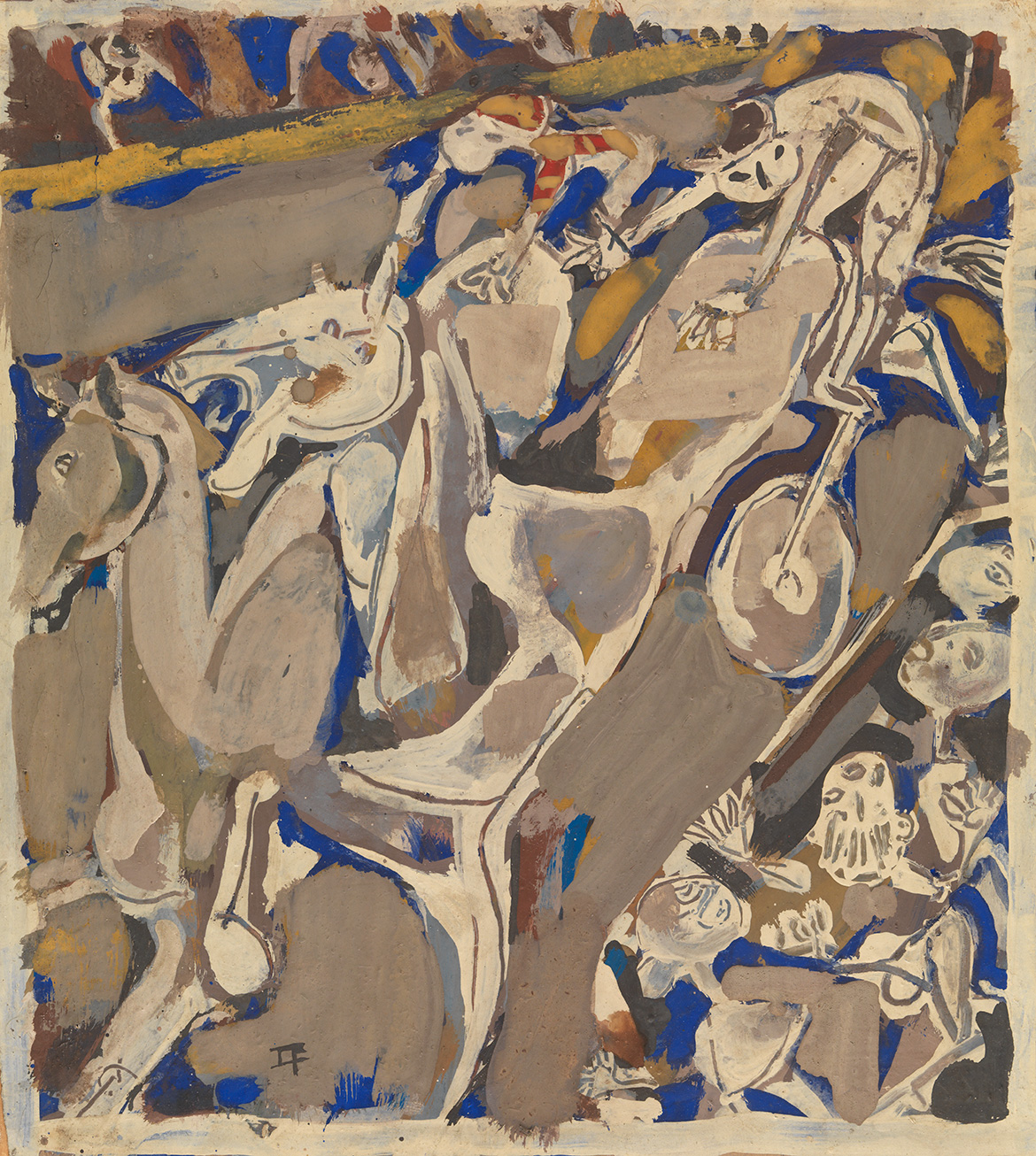
Other works may have been inspired by local sites and events: the interest in the movement and dynamism of horses seen in Trotting race 1956 may have been inspired by a visit to Redcliffe or Brisbane, where harness racing had been popular for many years. First exhibited at the Macquarie Galleries in Sydney in 1957, the painting is from a series created in 1955–56, in which Fairweather combined human and animal figures, embodying movement and energy. He returned repeatedly to the subject of horses: in Chinese culture, the steppe horses depicted in Tang-dynasty (618–907 AD) pottery evoked freedom and power. The bright, ultramarine pigment has been identified as ‘Reckitt’s blue’, a cheap and easily obtained colour, once used as a laundry whitening agent.
Ian Fairweather ‘Composition 1’ 1962
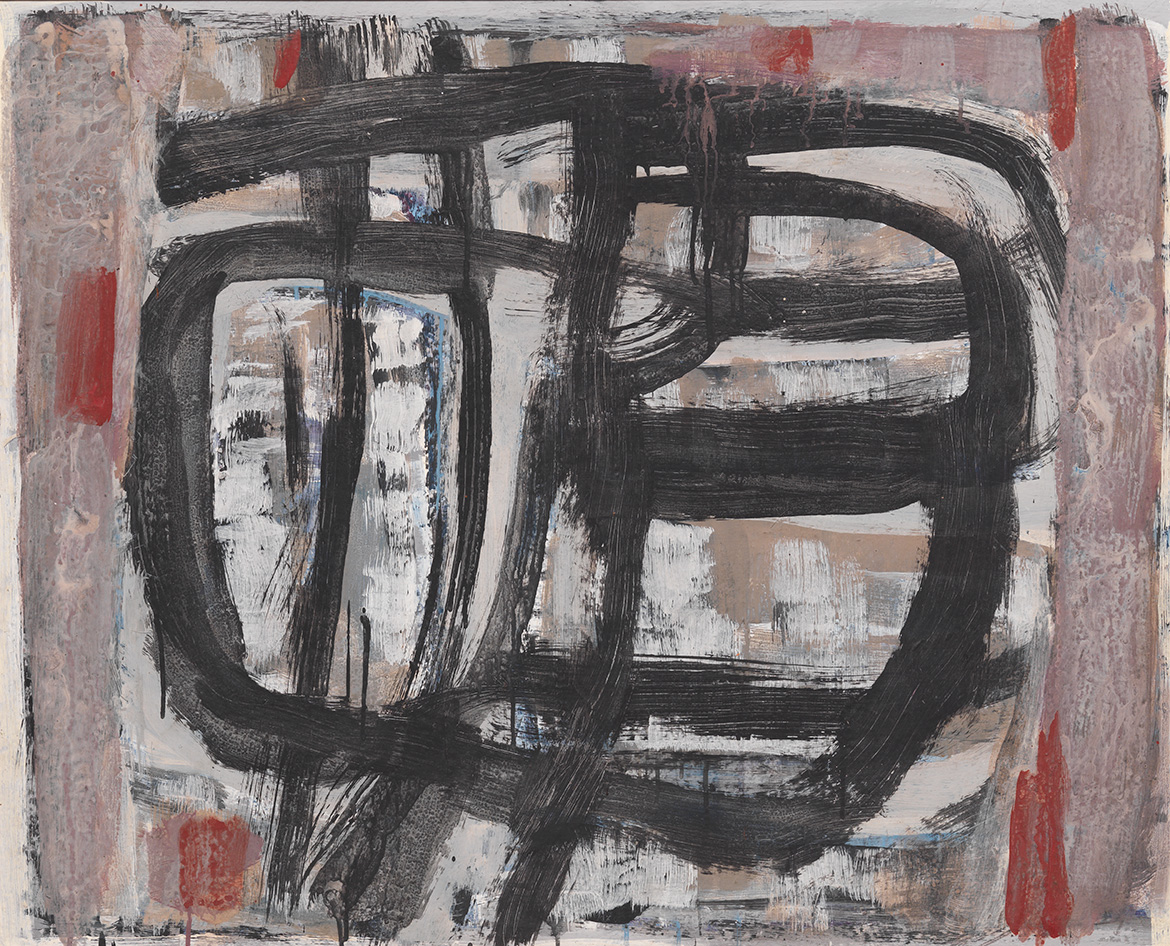
The progressive stylisation and abstraction of figurative elements can be perceived in Fairweather’s works from the 1930s onwards, but his venture into non-objective abstraction began in late 1958, reaching its peak with an exhibition held at the Macquarie Galleries in 1962, in which Composition I 1961 was included. This was a major break from the compositions being produced by other prominent Australian painters of the time, such as Russell Drysdale, Arthur Boyd and Sidney Nolan. Fairweather himself seemed equivocal about the pictures, writing that ‘they really refer (mostly) to nothing in particular — sort of soliloquies I suppose will have to come under the heading of abstracts’.1
Aspects of Fairweather’s art at this time were drawn from his past life in China and his abiding enthusiasm for its language and culture. He had developed this interest when he was a prisoner of war during World War One and had later travelled to China, where he worked, painted and learned Mandarin. This passion, and the influence of the linear grace of the Chinese art of calligraphy, is discernible throughout the rest of his life and works. Fairweather signed paintings he thought to be particularly successful with the Chinese characters meaning ‘auspicious’.
‘The Drunken Buddha’ 1965

An important episode during Fairweather’s Bribie Island years was his translation of the The Drunken Buddha, which honoured his time in China and his respect for the country’s intellectual tradition. Fairweather completed the laborious translation using a dictionary, by the light of a hurricane lamp. The Drunken Buddha was published by the University of Queensland Press in 1965 and illustrated using 12 of Fairweather’s paintings: one of these is QAGOMA’s Chi-tien drunk – carried home 1964, accompanied by the playful Chi-tien stands on his head 1964, from the University of Queensland collection. The novel, based on a story well known in China, follows the life of the monk Tao-chi (1148–1209), also known as Chi-tien, who was renowned for his unorthodox behaviour. Both works have the wavering border which is so characteristic of Fairweather’s works throughout the last two decades of his life, and become a feature of his series of abstractions.
Ian Fairweather ‘Chi-tien drunk – carried home’ 1964
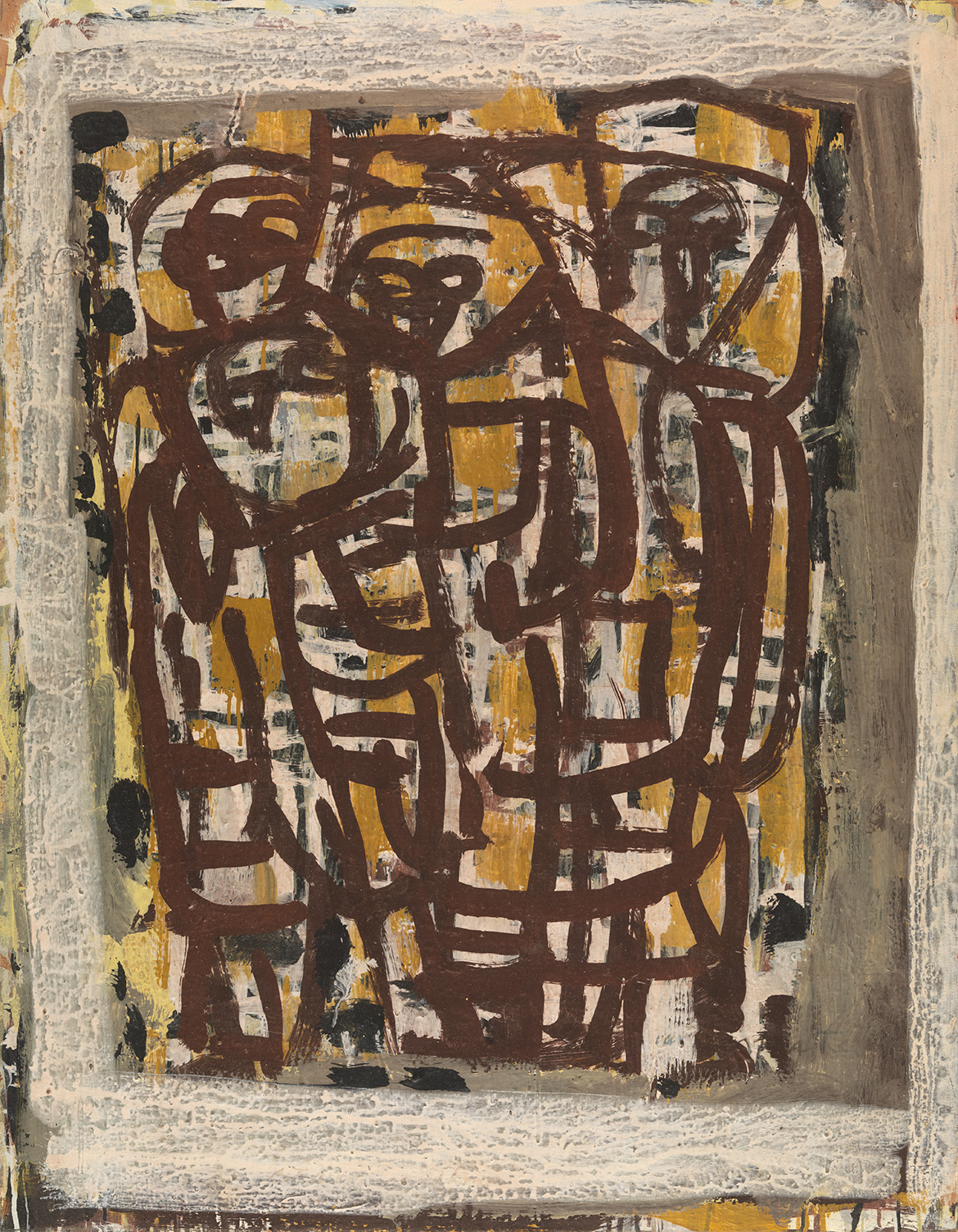
Ian Fairweather ‘Chi-tien stands on his head’ 1964
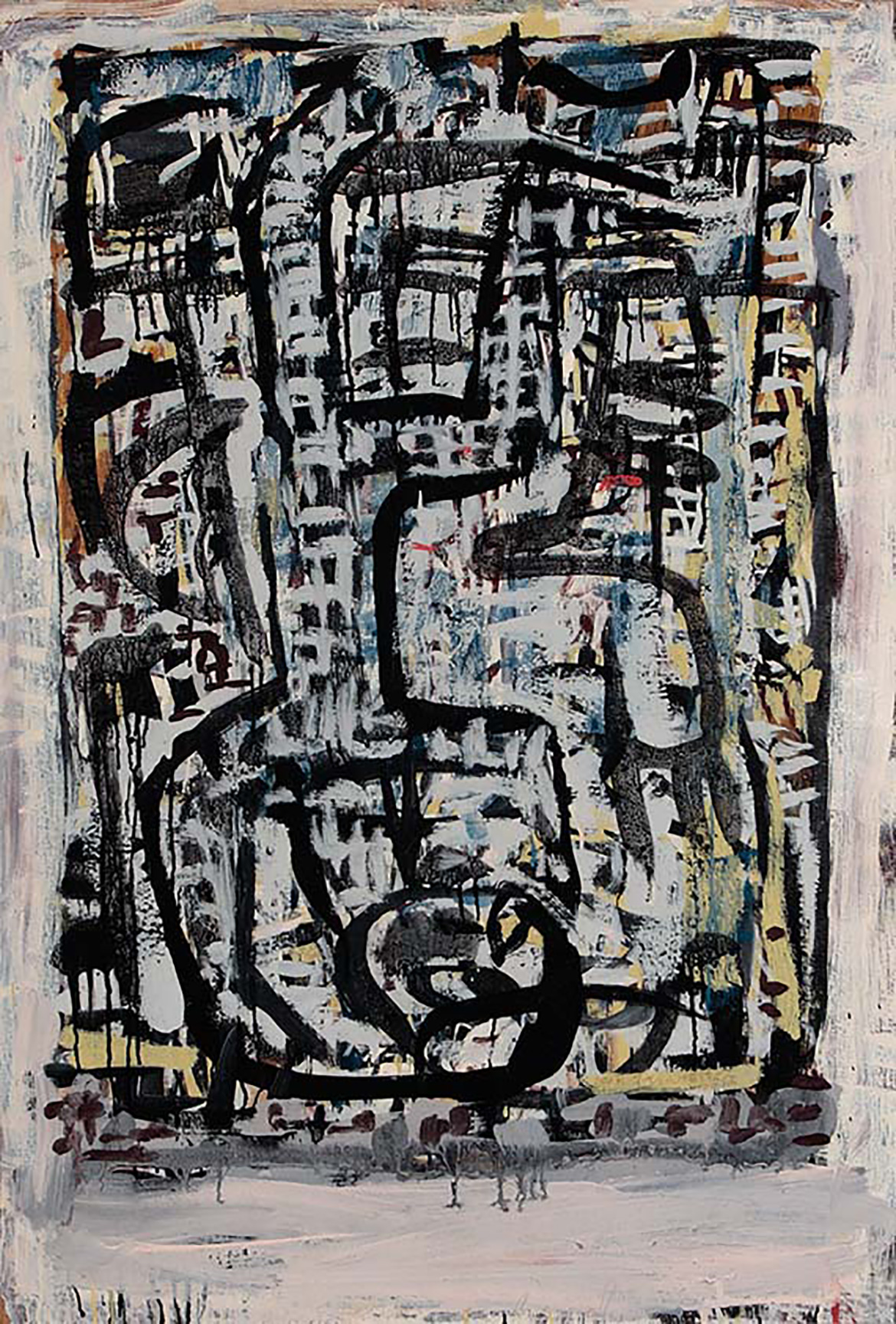
According to Fairweather, the publication proved a lengthy and challenging task and the subsequent transcription and editing was completed with the assistance of a number of typists. If you’re very lucky, you can still come across this publication in second hand book stores.
Ian Fairweather ‘Bus stop’ 1965
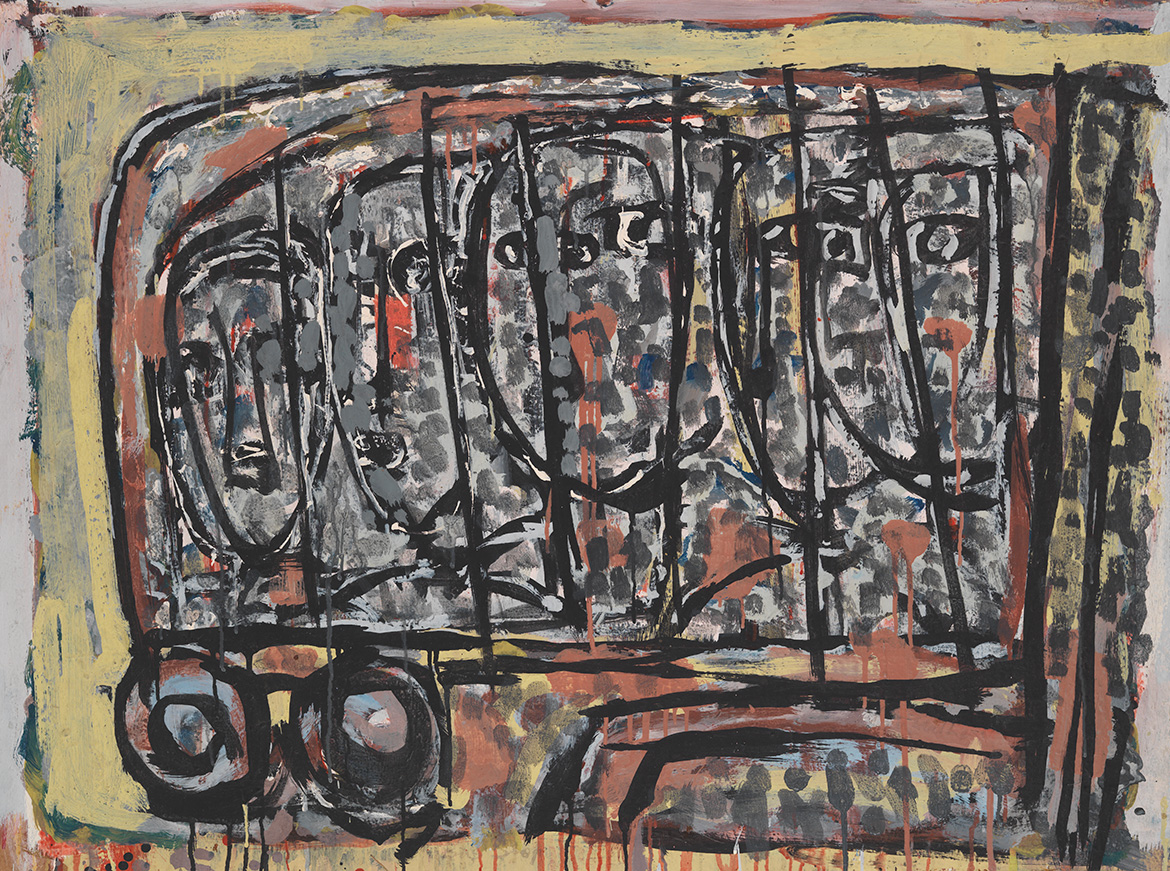
A sense of Fairweather’s daily routine can be glimpsed in Bus stop 1965, in which passengers quizzically peer out at the world. First exhibited in the Easter exhibition of 1966 at Sydney’s Macquarie Galleries, writer Murray Bail described the work as ‘an exploration of relationships and a comment on an everyday but ritualised event’.2 In a note of 15 March 1965, Fairweather commented that ‘the bus (Stop) is part of the landscape as seen from the beach outside the grocery over my daily bottle of milk’.3 For an ostensibly secluded artist, and one who fulfils the popular stereotype of solitary genius, Fairweather was remarkably communicative, as can be seen in his letters. His correspondence is filled with observations of daily life on Bribie, even with his complaints, suspicions and paranoias.
Angela Goddard is former Curator, Australian Art to 1975, QAGOMA
Endnotes
1 Letter from Ian Fairweather to Treania Smith, 11 November 1959, Bribie Island, Art Gallery of New South Wales Archives, Sydney.
2 Murray Bail, ‘Ian Fairweather 1891–1974’, in Ian Fairweather [exhibition catalogue], Philip Bacon Galleries, Brisbane, 1984, p.20.
3 Letter from Fairweather to Treania Bennett (nee Smith), 15 March 1965, Bribie Island, Art Gallery of New South Wales Archives, Sydney.
#QAGOMA

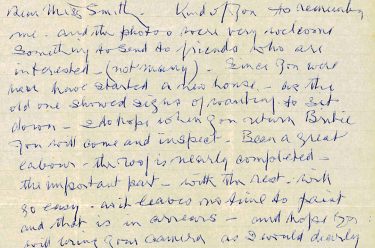
Message for Angela Goddard, Curator
My wife and I we love the few works of Fairweather we have seen when we visit Australia from Hong Kong. I have just learnt about your Fairweather exhibition and would like to come except I might not be able to get away, because I am a Board member and Endowment Trustee of the Hong Kong Maritime Museum which is opening in its new premises in late February.
Is there any chance that this exhibition will travel to another museum or that it might be extended beyond 3rd March. Studying the catalogue is not quite the same thing. This will be a once in a lifetime experience and at my age, likely to be my last.
William Waung
sent from Email: waung.william@gmail.com
Hello William. Unfortunately our current exhibition ‘Ian Fairweather: Late Works 1953–74’ must close 3 March 2013 and is also not scheduled to tour. We do however have a wonderful group of Fairweather’s earlier figurative works that will be available to view when the exhibition finishes, a very substantial group exhibited in our permanent Collection galleries at the Queensland Art Gallery (QAG). Perhaps you might like to contact us when you next plan to visit Brisbane and we could arrange to meet. Thank you for making contact. Regards QAGOMA